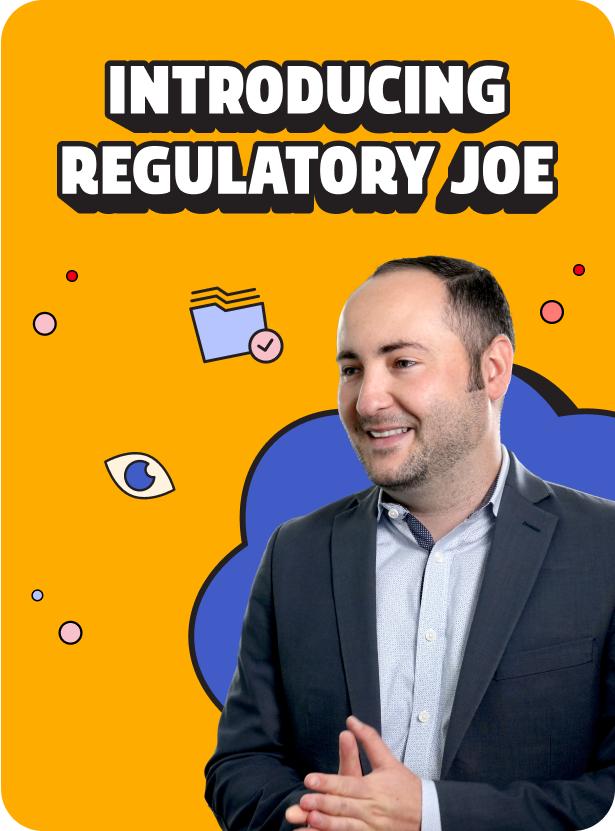The latest CMS updates to risk adjustment are about more than compliance—they’re about creating a stronger, more strategic foundation for health plans. By understanding these changes and adapting effectively, your organization can seize new opportunities for success.
What is Risk Adjustment?
The CMS risk adjustment program helps stabilize the individual and small-group markets by redistributing funds from plans with lower-risk members to those covering higher-risk populations. This ensures all plans can compete fairly while serving diverse member needs.
The process starts with Risk-Based Insurance System (RBIS) submissions, followed by data analysis through the EDGE server to calculate risk transfers. Accurate coordination among actuarial, claims and operational teams is essential for health plans to comply with CMS standards and maintain financial stability.
Key Updates for 2025
- New Baseline Data: CMS has established a new baseline using claims and member data from 2019-2021, which includes an influx of members entering the federally facilitated marketplace during the COVID-19 pandemic.
- User Fee Reductions: CMS decreased fees from 21 cents to 18 center per member per month, favoring larger carriers with significant market shares and challenging newer entrants
- Focus on AI/AN Populations: CMS has emphasized improved integration of American Indian and Alaska Native populations in submissions, with specific plan design and claims data considerations.
What’s Happening with the American Rescue Plan?
The American Rescue Plan (ARP) played a pivotal role in expanding access to healthcare coverage by increasing subsidies for ACA marketplace plans. During the COVID-19 public health emergency, these enhanced subsidies drove record-breaking enrollment, adding over 16 million members to the federally facilitated marketplace.
However, the future of these provisions remains uncertain. Should the ARP subsidies be rescinded in 2026 or beyond, health plans may face significant membership declines and shifts in risk pools. Conversely, if the subsidies are maintained, we could see continued membership growth and a corresponding decrease in user fees as economies of scale come into play.
Regulatory Joe Recommendations
- Register for CMS REGTAP Webinars: Stay informed on the latest risk adjustment policies and processes by attending these sessions, which provide valuable guidance on all things compliance.
- Start strong with operational readiness:If you’re new to a market, consider CMS’s default charge for your first year. This approach buys you time to build the internal expertise and infrastructure needed for full submissions, setting your plan up for long-term success.
- Collaborate across teams: Break down silos and engage your actuarial, claims, and filing teams early and often. Collaboration ensures your data is accurate, your submissions are compliant and your processes are seamless.
- Tap into data to understand your populations: Your internal population health data is a goldmine—use it! Prioritize analyzing claims and trends, especially for high-priority groups like American Indian and Alaska Native populations, to meet CMS standards and better serve these communities.
- Harness the power of predictive analytics: Predictive modeling and AI tools can help you forecast member behavior, identify trends in claims utilization, and improve the accuracy of chart-chasing and submissions.
Be sure to watch the full episode for a more detailed run-down of changes and recommendations.
Subscribe for new videos sent right to your inbox!
VIDEO TRANSCRIPT
Welcome to Regulatory Joe. I’m Joe Boyle, President of Regulatory Solutions here at Penstock. And in today’s episode, we’ll be talking about risk adjustment and user fees for benefit year 2025.
So what is risk adjustment? Risk adjustment is a program that was developed by CMS to help balance the risk between payers covering more high risk members than low risk members. At the end of each year, the risk adjustment process kicks off after the RBIS submissions are completed, when filings are approved. The risk adjustment process occurs on an annual basis and is required by all payers across the country who participate in the ACA. The process begins after the RBIS submissions are complete, where payers load their plan and benefit, rate data, service area and business rules information into the health insurance oversight system.
Once the senior officer attestation has completed with the RBIS submission process and those plans are approved to feed data down to the EDGE server, risk adjustment can then begin. And it’s really interesting because the timeline of the risk adjustment process has remained the same for benefit year 2025.
However, CMS has changed a couple things for this upcoming cycle. And what we did see is that CMS has taken a sample of claim and member data from 2019, 2020 and 2021 to create the new baseline for 2025 benefit year submission data. While we’re following the approach CMS has put forth, it is really interesting that they’ve chosen years 2019 through 2021 for a couple reasons.
Looking at the uptick in membership due to the public health emergency does skew a data set where over 16 million members entered the federally facilitated marketplace over this time. So we do agree that the three year scope of data that CMS has provided for benefit year 2025 will be good for this submission cycle.
We encourage carriers not to get too ahead of themselves by forecasting into 2026 or 2027 based on those data sets. Looking back to 2019 on how the public health emergency had a large impact on the overall risk adjustment process in general would be interesting to see how this changes in 2026 and 2027 after this year’s submission cycle.
We did see that during the public health emergency, CMS had released the American Rescue Plan, which increased access to subsidies for members across the country. At that specific point in time is where CMS had seen record breaking enrollment numbers of over 16 million members on the Federal Exchange last year.
If CMS does decide to unwind the American Rescue Plan in 2026 or 2027, issuers should expect to see a drastic drop in membership across the board in all states across the country. If CMS continues to uphold the American Rescue Plan in 2026 and 2027, we should still expect to see an increase of the risk adjustment transfer of funds, as well as a decrease in the user fees. We do see that this change is overall more favorable to larger carriers rather than smaller regional players for a couple different reasons. When CMS reduces the user fees from 21 cents to 18 cents per member per month, there’s a couple things that happen.
Carriers that retain the most market share of membership with any given state will benefit far greatly from those user fees however smaller carriers, or let alone new market entrants who have no membership or limited membership year one or year two of their market presence will struggle. If the American Rescue Plan continues to be upheld with subsidies year over year, we should still see a consistent decrease of user fees through 2026 and 2027.
If the American Rescue Plan is rescinded, we actually could see user fees go up. And speaking of new markets, if you are an issuer looking to enter a new geography for plan year 2025 or plan year 2026, this is something you really need to think about. As you enter a market, if you are not the majority market share owner and have limited market membership year one, CMS allows new issuers to opt to take what they call a default charge instead of standing up an entire risk adjustment submission process, including their EDGE server.
So you may ask yourself why a carrier would opt to take a simple default charge rather than setting up an EDGE server. There’s a couple key reasons why they do that. First and foremost, it’s very expensive to complete a risk adjustment submission. Not only is the carrier taking on the full risk of our fully insured ACA qualified health plan product, but they need to support this process and this function and activity internal to their organization.
To sustain an operation of this size it requires subject matter expertise in a couple different focus areas including finance, actuarial, claims expertise, and payment policy, and even working with the dedicated filing team that submitted the original templates that were approved and certified by CMS in your divisions of insurance.
If you don’t have the operational infrastructure currently on staff at your health plan, there are organizations that you can partner with externally to help meet your goals either by accepting the default charge or standing up this process for a formal benefit year 2025 submission. By taking the default charge year one, it would allow your issuer to take an extra year additionally to stand up the process internally, develop policies and procedures and offer dedicated resources year round to make sure that the process is done correctly, timely and compliantly for CMS.
One of the last focus areas that CMS has pushed in addition to releasing new risk adjustment requirements was an additional focus on American Indian and Alaskan native populations. Understanding that the AI/AN population generally comes with $0 healthcare services, it needs to be treated differently as the claims and benefit data are ingested within the EDGE server process.
CMS has encouraged issuers to be more familiar with their AI and AN populations that they serve today so that they can better understand their membership volumes, membership projections, claim projections, and even geographies where AI/ANs live across the country.
If your carrier or health plan internally has a population health team, it’s likely that you can extract data from that system to understand where claims are coming from, what health activity AI/AN populations are seeking and where they need care the most. By better understanding and analyzing this population and the activity day to day, it’ll actually help formulate process that can be embedded within your risk adjustment submission, making sure that you’re compliant with CMS’s new standards for AI/AN and making sure that you’re serving this population the way we should be.
And in talking about the AI/AN population overall, we do know that the majority of these members do fall within the Silver Plan variant range, collecting cost share reconciliation dollars. So from a plan filer’s perspective on the front end, back in Q1 or Q2 of each year when you’re developing plans, always make sure that you’re working with your product strategy team that you’re developing compliant AI/AN Silver variant plans that comply with your cost share reconciliation process so that when that data is produced and flows downstream, it’s captured by the EDGE server correctly. Even though the risk adjustment submission happens in Q3 and Q4 of each year, it really begins when your plan and portfolios are developed pre-filing at the beginning of every year.
So it’s important to collaborate with your internal stakeholders. We recommend establishing a work group internally to facilitate information across all of your product teams and develop a robust project plan to track working activities with point of contact assignments. We found it really interesting too, that in the data sets for the past three years, that CMS is using as their configuration baseline for benefit year 2025, that they did see an overall uptick in usage for hepatitis C prescription drugs.
Issuers should be thinking of other heavily utilized or underutilized drugs for benefit year 2026 and 2027 to get ahead of any recalculations that CMS will put forth next year. We encourage you all to work with your PBM, your pharmacy benefit manager, and your internal pharmacy subject matter experts to understand what drugs are up and coming, what utilization has actually decreased or everything in between.
We do have a few recommendations for getting ahead of this process for benefit year 25, regardless if you’re a new issuer or a renewing issuer with an existing geography. If you’re a new market issuer, it’s not a bad idea to take the default charge to allow you more time to stand up an operational process internal to your health plan and master that.
If you are currently existing in a market and you’ve already set up your EDGE server for benefit year 2025, we recommend you partner closely with your internal actuarial team to make sure that your claim calculations are accurate and submitted timely to CMS. We recommend that you establish core reporting internal to your population health or data warehouse team to better understand claim start, claim end dates and claim accumulators against a member’s deductible or out-of-pocket maximums so you’re understanding when and how members are utilizing their benefits the most. Understanding this process will be critical to forecasting and planning your risk adjustment dollars as CMS pays back issuers and takes money for health plans insuring higher risk members versus lower risk members.
We do encourage issuers, if you have the capabilities to deploy any type of IT components or AI functionality to better understand predictive modeling. We do see this as an up and coming theme to better understand member behavior about when they need care the most, what conditions they currently have and the progressions of any health episodes, if any. This will be very important to understand, especially during the chart chasing process as claim information is collected and received from payers and providers to complete risk adjustment submissions.
We recommend that you register for the CMS REGTAP webinars that cover the risk adjustment process year round. There’s generally weekly, biweekly, or monthly webinar sessions that you can register for to become familiar with the process and take that information back to your teams for a successful submission season.
Our final recommendation would be that year over year, we do see that this process can be deprioritized for certain organizations. We encourage you all to keep this at the forefront of your priority list for projects this year and also next year to come. Thanks everybody for listening in today. Give us a like, give us a share and we’ll catch you next time.









